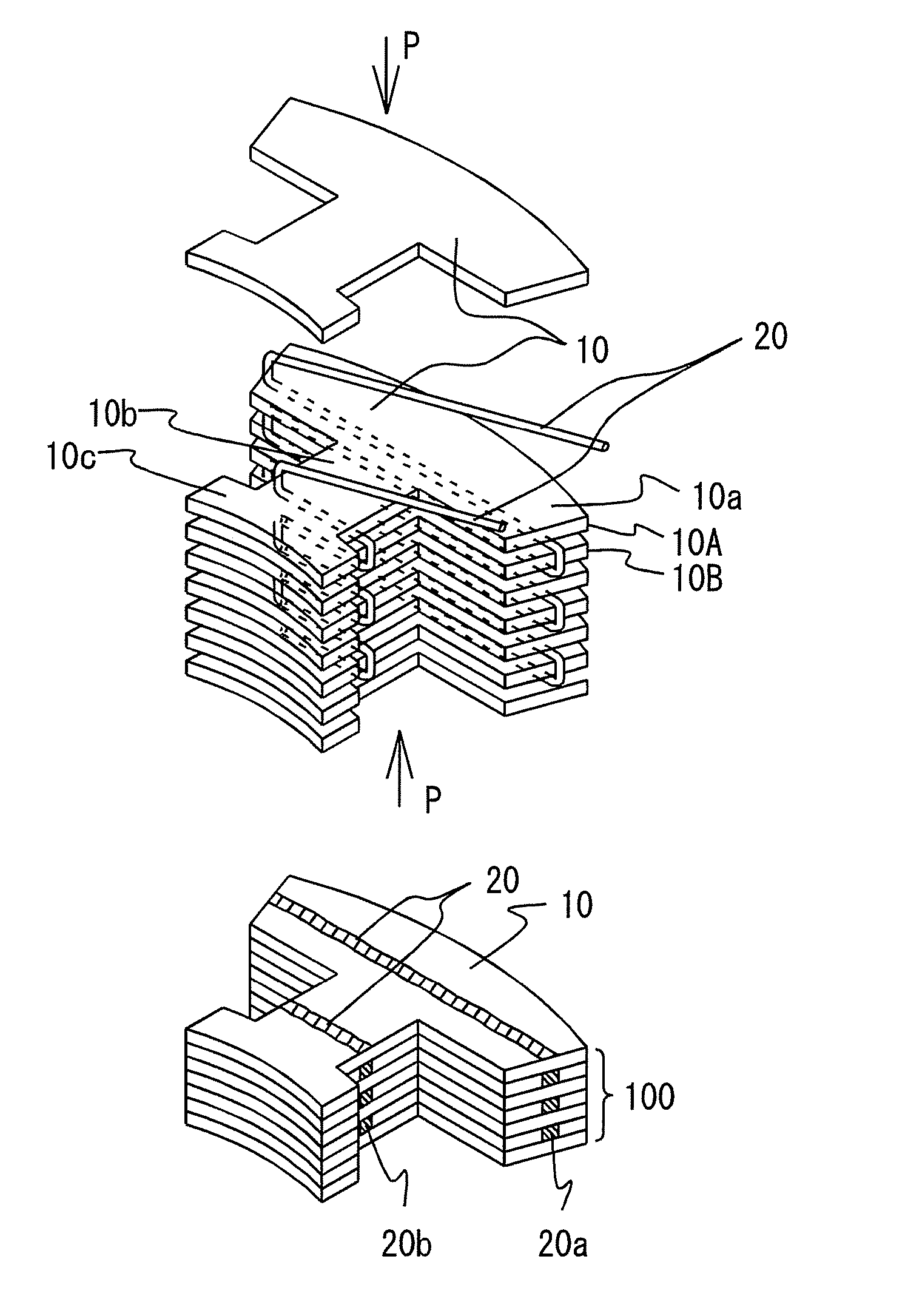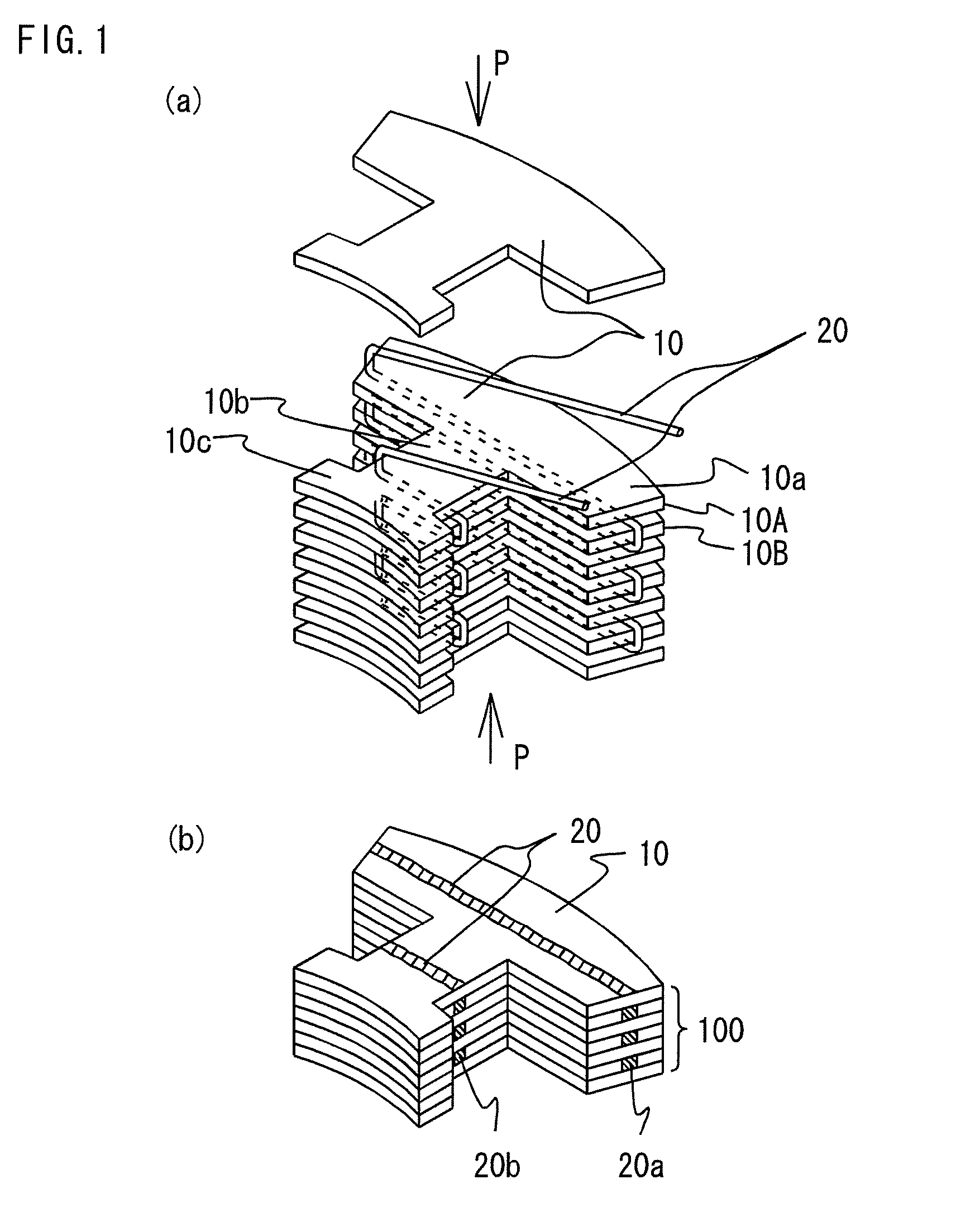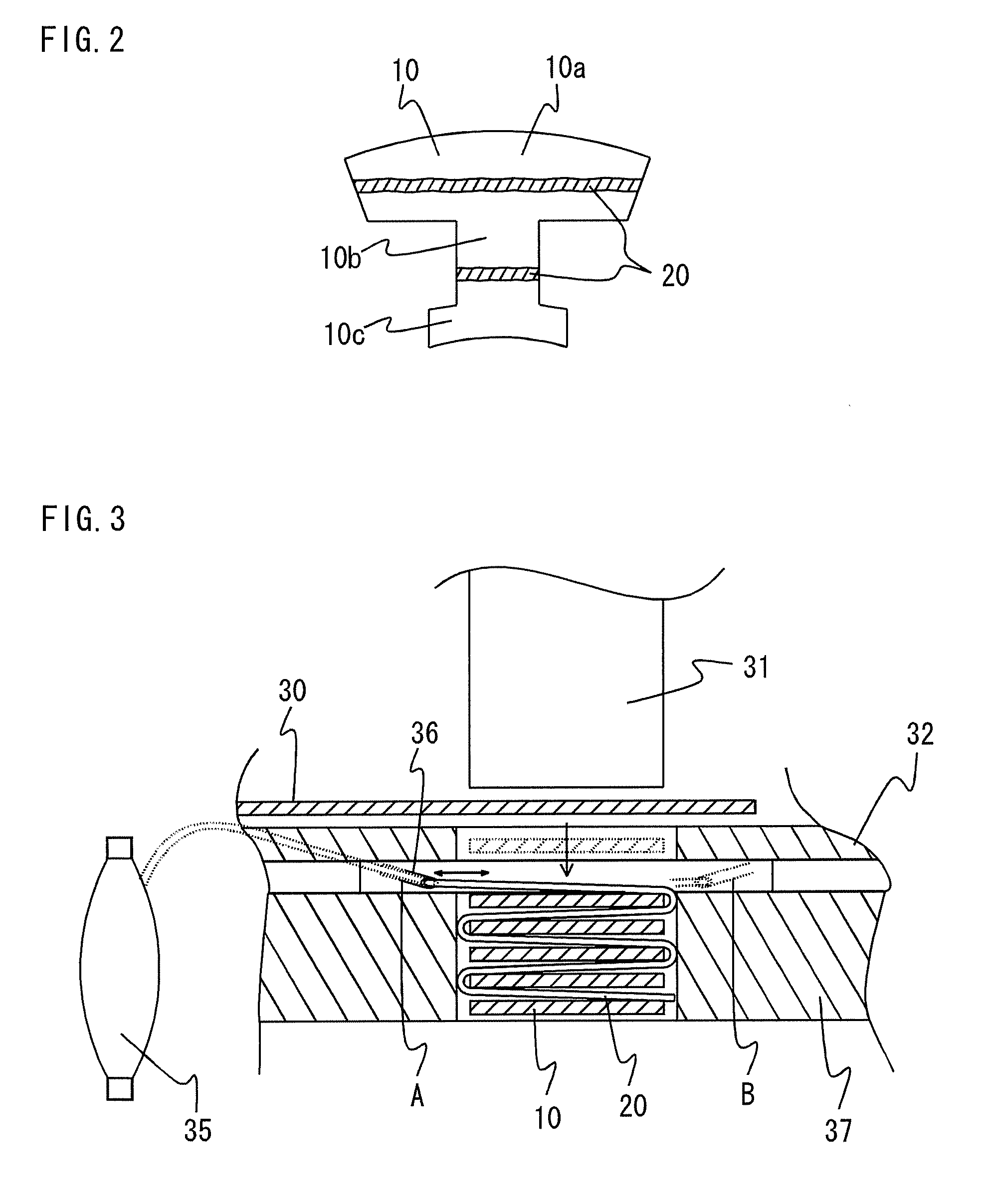Laminated core, method and apparatus for manufacturing laminated core, and stator
a technology of laminated cores and stators, which is applied in the manufacture of stators/rotor bodies, magnetic circuit shapes/forms/construction, manufacturing tools, etc., can solve the problems of short circuits, degradation of the magnetic properties of laminated cores, and drawbacks of conventional manufacturing methods of laminated cores, etc., to achieve high productivity, stable bonding accuracy and bond strength, and high efficiency
- Summary
- Abstract
- Description
- Claims
- Application Information
AI Technical Summary
Benefits of technology
Problems solved by technology
Method used
Image
Examples
first embodiment
[0037]FIGS. 1A and 1B are perspective views showing the structure of a laminated core block 100 according to a first embodiment of the invention, in which FIG. 1A depicts a state before a laminating process and FIG. 1B depicts a state after the laminating process. FIG. 2 is a plan view showing an arrangement made between individual core members 10 of the laminated core block 100 of FIGS. 1A and 1B. As shown in these Figures, the laminated core block 100 is constructed by laminating a plurality of core members 10 which are magnetic sheets like iron sheets or electromagnetic steel sheets measuring approximately 1 mm or less in thickness. Each of the core members 10 has generally a T-shape including a yoke portion 10a, a tooth portion 10b extending from the yoke portion 10a and a tooth end portion 10c located at a far end of the tooth portion 10b.
[0038]In this embodiment, a threadlike thermoplastic resin strand 20 is placed between the individual core members 10 to run side to side ac...
second embodiment
[0048]While the foregoing discussion of the first embodiment has described the arrangement in which the thermoplastic resin strand 20 is laid in the direction generally at right angles to the projecting direction of the tooth portion 10b of each core member 10, this arrangement may be so modified that the thermoplastic resin strand 20 runs across the tooth portion 10b of each core member 10 in a direction generally parallel to the projecting direction of the yoke portion 10a along two lines located generally symmetrically about a center line of the tooth portion 10b according to the present invention.
[0049]FIG. 5 is a plan view showing the structure of a laminated core block 100 according to a second embodiment of the invention. In this embodiment, the thermoplastic resin strand 20 is arranged between the individual core members 10 to run across the tooth portion 10b of each core member 10 in the direction generally at right angles to the projecting direction of the tooth portion 10...
third embodiment
[0053]While the thermoplastic resin strand 20 is laid in the direction generally at right angles to or generally parallel to the projecting direction of the tooth portion 10b of each core member 10 in the foregoing embodiments, two sections of the thermoplastic resin strand 20 may be arranged to be folded back between the outer peripheral side of the yoke portion 10a of each core member 10 and both circumferential ends thereof generally symmetrically at two locations.
[0054]FIG. 8 is a plan view showing the structure of a laminated core block 100 according to a third embodiment of the invention. As depicted in FIG. 8, the yoke portion 10a of each core member 10 has a pair of cut-out parts 60 formed in the outer peripheral side of the yoke portion 10a opposite to the tooth portion 10b generally symmetrically about a center line thereof. Each core member 10 further has a recessed part 41 formed in one side surface of the yoke portion 10a and a protruding part 42 formed on the opposite ...
PUM
| Property | Measurement | Unit |
|---|---|---|
| Angle | aaaaa | aaaaa |
Abstract
Description
Claims
Application Information
 Login to View More
Login to View More - R&D
- Intellectual Property
- Life Sciences
- Materials
- Tech Scout
- Unparalleled Data Quality
- Higher Quality Content
- 60% Fewer Hallucinations
Browse by: Latest US Patents, China's latest patents, Technical Efficacy Thesaurus, Application Domain, Technology Topic, Popular Technical Reports.
© 2025 PatSnap. All rights reserved.Legal|Privacy policy|Modern Slavery Act Transparency Statement|Sitemap|About US| Contact US: help@patsnap.com



